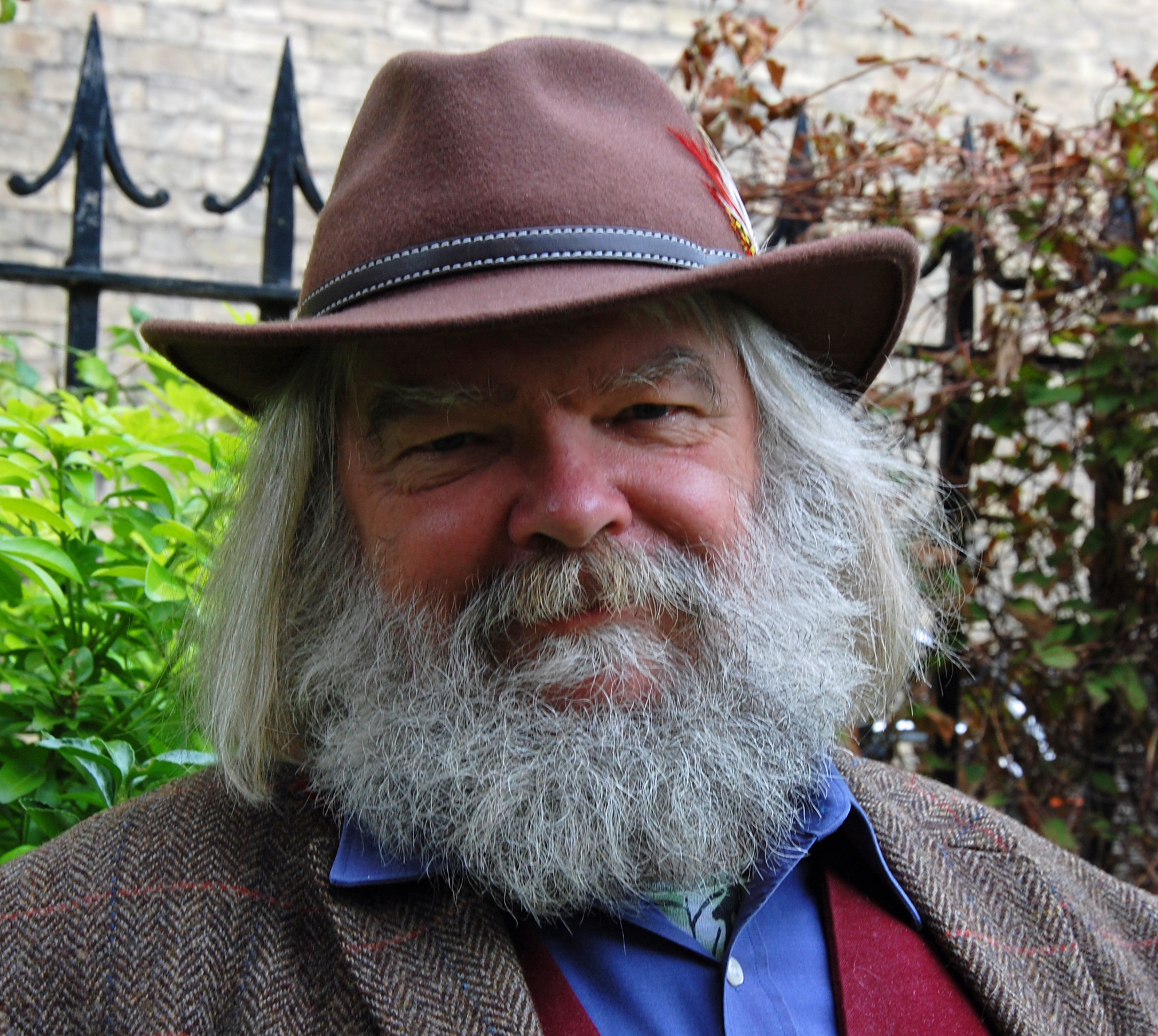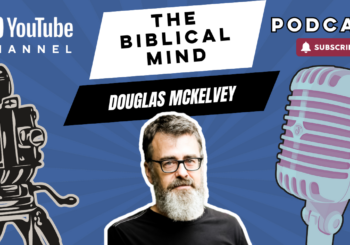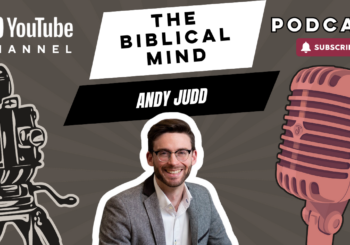Why Poetic Imagination Is Necessary to Understand Biblical Prophecy
To engage with Scripture fully, we must avail ourselves of both Reason and Imagination. These two ways of knowing are, or should be, always mutually enfolded; for, as C.S. Lewis remarked:
“Reason is the natural organ of truth, but imagination is the organ of meaning.”1At the end of the chapter, “Bluspels and Flalansferes,” in Selected Literary Essays, by C.S. Lewis.
But what do we mean by “the poetic imagination”? We certainly don’t mean indulging in “the imaginary” in the sense of something simply made up, nor do we mean becoming besotted with images simply for their own sake, something against which the prophets are constantly inveighing.
Enjoying this article? Read more from The Biblical Mind.
On the contrary, the poetic imagination is precisely that faculty which allows an image to become fruitfully laden with meaning, or, in another metaphor, to become translucent and give us a glimpse of the shape and color of the light that inspired it. The poetic imagination is what makes the difference between an idol and an icon.
Coleridge, a poet who thought more deeply than most about the powers and role of the imagination, and whose thought led him back to a full and rich Christian faith, explains in the Biographia Literaria that when he and Wordsworth wrote the Lyrical Ballads, they were not trying to lull the mind to sleep or whisk it away into some never-never land with no purchase on reality. On the contrary, their purpose was:
to excite a feeling analogous to the supernatural, by awakening the mind’s attention to the lethargy of custom, and directing it to the loveliness and the wonders of the world before us; an inexhaustible treasure, but for which, in consequence of the film of familiarity and selfish solicitude, we have eyes, yet see not, ears that hear not, and hearts that neither feel nor understand.2Samuel Taylor Coleridge Biographia Literaria, edited by James Engell and W. Jackson Bate (Princeton 1983), Vol. II pp 6–7 Volume 7 in CC.
The scriptural echoes and theological reach of this account of poetry scarcely need comment—Coleridge’s own mind and poetry had been formed by scripture, for he was a child of the manse.
A Network of Biblical Imagery
Now if we turn to scripture itself, the first thing we should observe is that the great prophetic writings are themselves poetry of the highest order. When a prophet is called by God to remind Israel of a covenant, which they have abandoned, or call for a return to that covenant which has not yet been enacted, the prophets avail themselves of the poetic imagination and offer image after image to try, as Shakespeare puts it in his account of poetry, to “body forth the form of things unknown.”3A Midsummer Night’s Dream, Act V, Scene 1 So it is that a vineyard, an olive grove, a wine press, a wedding, a feast, a flowering branch of almond, and a tree planted by the waters are all pressed into service that they might express for us the otherwise inexpressible.
Take that last image, of a tree planted by the waters, as an example. It comes in the very first psalm as an image or “bodying forth” of what it means to be a “righteous man,” a person of God. The psalmist opens up the image a little by saying that such a person “brings forth fruit in due season,” but there is so much more contained in and unfolding from that image. There is the steady steadfast rootedness of the tree itself as an emblem of stillness and patience, contrasted with the wind-blown chaff later in the psalm; there is the implication of deep roots drawing up the waters, and the waters themselves as an emblem of the flowing grace of the Holy Spirit—so that, for a Christian reader, the fruits in the psalm are the fruits of the spirit.
And that itself reveals the way scriptural imagery works. For one image calls to and resonates with another across the whole living network of the Scriptures. The tree by the waterside itself recollects the tree of life planted in Eden where the four rivers flow, and looks forward to the trees by the river of life in Revelation whose leaves are for the healing of the nations. This single image of our being like a tree, reaching through the Scriptures from Genesis to Revelation is itself informing the mind of St. Paul when he draws on it in Ephesians, when he prays “that Christ may dwell in your hearts through faith, as you are being rooted and grounded in love” (Eph 3:17). None of this could be said adequately in a syllogism or a theological abstraction. Instead the Scriptures give us, not concepts alone, but living images with which to think and from which to draw wisdom.
But there is more to prophecy than the embodiment of truth in symbol. When Isaiah prophesies that “God will destroy on this mountain the shroud that is cast over all peoples, the sheet that is spread over all nations; he will swallow up death forever” (Isa 25:6–8, NRSV), he offers us an image that goes to the heart of prophecy itself: the image of unveiling, revealing, removing the shroud and lifting off the sheet. And this is just the image Coleridge uses of poetry, the lifting of the “film of familiarity.” This unveiling brings revelation, a revelation not only of the hidden forces at work in the present but also a revelation or vision of pending fulfillment, a vision that is, itself, both a critique of the present and a source of hope.
Christ, Prophecy, and Poetic Imagination
When Christ began to preach, he was immediately recognized as a prophet in this tradition, and the New Testament is the exciting story of the gradual revelation that he was, and is, so much more than that. So when we speak of Christ and prophecy, we can understand that phrase in two ways. In one way, of course, we can see in Christ the extraordinary and surprising fulfillment of so much Old Testament prophecy. The Gospels are full of such moments in which an unresolved prophecy, hanging in the air, suddenly finds its resolution and fulfillment in Christ, and the Gospel writer quotes it and exclaims with joy on its fulfillment.
The source and epitome of this series of epiphanies in which an Old Testament puzzle suddenly finds its solution, a mysterious prophecy finds its meaning, is the story of the Road to Emmaus, where Christ shows the forlorn disciples how the very events that they have taken as signs of rejection and defeat, once understood in the light of “Moses and the prophets,” become signs of victory and hope:
Then he said to them, “Oh, how foolish you are, and how slow of heart to believe all that the prophets have declared! Was it not necessary that the Messiah should suffer these things and then enter into his glory?” Then beginning with Moses and all the prophets, he interpreted to them the things about himself in all the scriptures (Luke 24:24–27).
The disciples later remark, “Were not our hearts burning within us . . . while he was opening the scriptures to us?” (Luke 24:32) The realization that Jesus himself is the fulfillment of prophecy, and that the apparent defeat of the Cross is revealed or unveiled in the light of the Resurrection as a victory, completely transforms and galvanizes those who grasp it.
But we can see Christ as not only the fulfillment of prophecy, but also, like the Old Testament prophets before him, as the wielder and kindler of the prophetic, and therefore poetic, imagination. We can see his teaching about the kingdom and especially his Sermon on the Mount as prophetic in all the senses outlined above: an embodiment, an unveiling, a reversal of fortunes and a vision of hope.
Consider, for example, the Beatitudes:
Blessed are the poor in spirit, for theirs is the kingdom of heaven.
Blessed are those who mourn, for they will be comforted.
Blessed are the meek, for they will inherit the earth.
Blessed are those who hunger and thirst for righteousness, for they will be filled.
Blessed are the merciful, for they will receive mercy.
Blessed are the pure in heart, for they will see God.
Blessed are the peacemakers, for they will be called children of God (Matt 5:3–9).
On the face of it, this is a set of absurdities and flat contradictions of human experience, and Reason per se rejects them. We do not experience poverty, mourning, and persecution as blessings. To us, the meek are precisely the people who do not appear to inherit the earth, because the arrogant have, as always, thrust them aside. In ordinary human experience, those who dare to act as peacemakers in the midst of conflict, far from being blessed, are cursed and deprecated equally by both sides for daring to suggest a new way of seeing things and prising people away from the comfort of their familiar hatreds. And yet, in spite of the way they contradict our experience, our hearts leap every time we hear these words. Something in us stirs, some long-suppressed hope revives, and we know that Jesus is right.
A Sonnet of the Beatitudes
When I came, in the course of writing Parable and Paradox, to make my own poetic response to these over-familiar words, I found the image that Jesus uses just after he has spoken them: the image of a lantern no longer hidden under a bushel but set on a hill, was, as it were, casting its light back on the sayings themselves, and I came to understand the Beatitudes as a kind of prophetic unveiling. This is how it came out as a sonnet:
The Beatitudes
I bless you, who have spelt your blessings out,
And set this lovely lantern on a hill
Lightening darkness and dispelling doubt
By lifting for a little while the veil.
For longing is the veil of satisfaction,
And grief the veil of future happiness.
I glimpse beneath the veil of persecution
The coming kingdom’s overflowing bliss.
Oh make me pure of heart and help me see,
Amongst the shadows and amidst the mourning,
The promised Comforter, alive and free,
The kingdom coming and the Son returning,
That even in this pre-dawn dark I might
At once reveal and revel in your light.4Malcolm Guite, Parable and Paradox, Canterbury Press (2016), 30.
I firmly believe that the veil of our mourning will be lifted, that the dark glass through which we presently see will be brightened, that the persecutions and hatreds that seem so rife in our world are not the core, not the deepest truth about the world, but are a veil or shadow covering something better. In the prophetic writings of scripture, and especially in the coming of Christ, the veil is lifted, lifted not only from the world but also from our own hearts. We encounter not only what Chesterton called “the buried sunrise of wonder” but also the long-veiled image of God in all his beauty, truth, and goodness.
End Notes
1. At the end of the chapter, “Bluspels and Flalansferes,” in Selected Literary Essays, by C.S. Lewis
2. Samuel Taylor Coleridge Biographia Literaria, edited by James Engell and W. Jackson Bate (Princeton 1983), Vol. II pp 6–7 Volume 7 in CC.
3. A Midsummer Night’s Dream, Act V, Scene 1
4. Malcolm Guite, Parable and Paradox, Canterbury Press (2016), 30.
Did you enjoy this article? Check out The Biblical Mind podcast.





